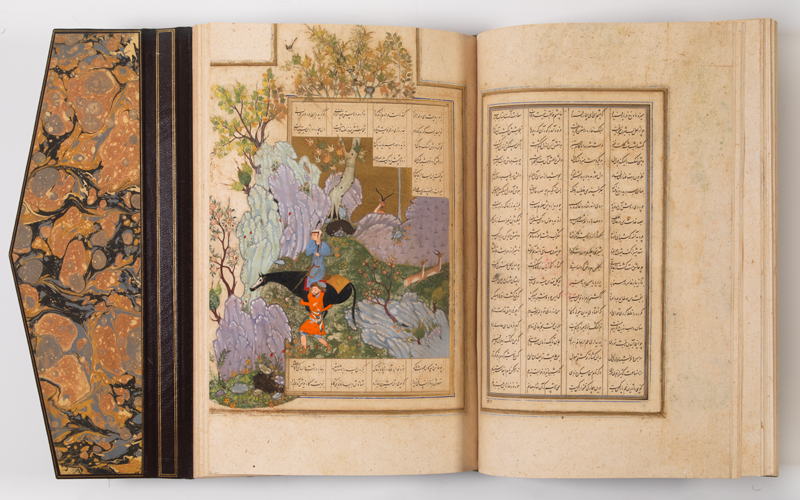Khosrow and Shirin

The tragic love story of Khosrow and Shirin, popularised by the Persian poet Nizami Ganjavi, is an integral part of the Khamsa [Five Poems] and gives an account of the passion of the Sasanian king Khosrow II for the Christian Armenian princess Shirin, who would become queen of Persia.
Characterised by meetings and misunderstandings, marriages and betrayals, Khosrow and Shirin’s relationship begins before they have even met: they fall in love with one another’s physical description. When they finally meet in Armenia, they experience a period of great passion, but life takes a different turn and Khosrow ends up marrying another woman. At the same time, a stonemason by the name of Farhad falls in love with Shirin. Blind with jealousy, Khosrow condemns Farhad to forced labour in exile and tells him that his love is dead, leading him to throw himself off a cliff.
After the death of his wife and a new failed marriage, Khosrow finally receives Shirin as his wife. The couple live happily together for several years until Khosrow’s son, also in love with Shirin, orders his father’s death. Shirin meets an equally tragic end, taking her own life.

This painting, taken from the Khamsa of the Founder’s Collection, portrays the hero of the poem, Farhad, carrying his beloved Shirin: in order to destroy the stonemason’s passion, Khosrow orders him to dig a tunnel through Mount Behistun. Before beginning, Farhad carves the portraits of Shirin and Khosrow on the surface of the rock. Shirin travels to it to see the carvings, but faints with exhaustion and Farhad takes her back to the castle, carrying her on his back and riding his horse.
This copy, made by Muhammed Ibn Mulla Mir Al-Hosseini c. 1591, includes two of Nizami’s Five Poems.
A Collection of Stories
On a weekly basis, we shared a story around Calouste Gulbenkian’s collection. This section was created in 2020, which is why the articles refer to the Calouste Gulbenkian Museum collection as the Founder’s Collection.
Other stories